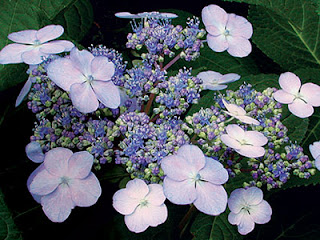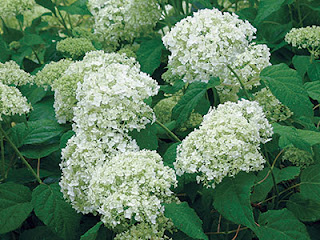Knowing if your shrub blooms on old or new wood will help you make timely cuts
I know people are confused about how to prune hydrangeas because I get asked about it all the time. The three most common reasons for their confusion are the plant’s dead-looking appearance in winter, its failure to bloom in summer, and the reasoning that because it’s a shrub it needs to be pruned. But these popular woody plants can live long, floriferous lives without ever feeling the cold blade of a pair of Felcos. Hydrangeas, though, can handle pruning (which, if done at the wrong time, may be the cause for the lack of flowers), and sometimes you might want or need to cut them back a bit. For example, you may not like the look of the fading blooms, or your shrub may be a bit too tall. Pruning hydrangeas can also improve a shrub’s vigor and increase the size of its flowers.
Not all of these shrubs should be pruned at the same time. Those that bloom on old growth should only be pruned after flowering. Others bloom on new growth and should be pruned before they wake up in spring or as they are going dormant in fall.
Blooms on old wood
- Bigleaf hydrangeas (Hydrangea macrophylla cvs., USDA Hardiness Zones 6–9)
- Bigleaf hydrangeas (H. serrata cvs., Z 6–9)
- Oakleaf hydrangeas (H. quercifolia cvs., Z 5–9)
Prune after the flowers start to fade in late summer
To determine if your hydrangea blooms on old wood, think about when it flowers. Shrubs with this characteristic generally begin blooming in early summer and peter out by midsummer, though sporadic blooms may appear afterward. These shrubs form next year’s flower buds in late summer or early fall as the days get shorter and temperatures cool off. To reduce the risk of removing these buds, prune just as the flowers begin to fade. Often, the earlier you get it done after bloom, the quicker the shrub can recover, producing more and larger blooms next season.
1. To tidy up, remove old blooms
Gardeners who want to maintain a tidy appearance can snip off spent blooms just below the flower head and remove any wayward or straggly canes at the soil line.
2. To improve vigor, remove the oldest canes
When a hydrangea gets old and woody, it can produce smaller blooms. Regular removal of a few of the oldest canes at the soil line can keep the shrub vigorous, producing large and abundant flowers. The same method can keep a shrub from getting too tall by targeting the tallest canes for removal.
Blooms on new wood
- Panicle hydrangeas (H. paniculata and cvs., Z 4–8)
- Smooth hydrangeas (H. arborescens and cvs., Z 4–9)
Cut back these shrubs in late winter before new growth begins
Because they need to grow and set buds the same year that they bloom, shrubs that flower on new wood generally start blossoming later than old-growth bloomers, beginning in midsummer and continuing until the first frost. These shrubs are forgiving if pruning is not done at a certain time as long as you avoid pruning when the flower buds are opening.
1. To get bigger flowers, cut them all the way back
2. To reduce flopping, leave a framework of old growth
Some hydrangeas’ branches often fall over under the weight of their blooms, especially after overhead irrigation or after a good rain. One way to alleviate this flopping is to cut the stems to a height of 18 to 24 inches to provide a sturdy framework to support new growth.
—Janet Carson is the horticulture specialist for the University of Arkansas Cooperative Extension Service.
Photos, except where noted: Steve Aitken
Illustrations: Chuck Lockhart
source: https://www.finegardening.com















.webp)
